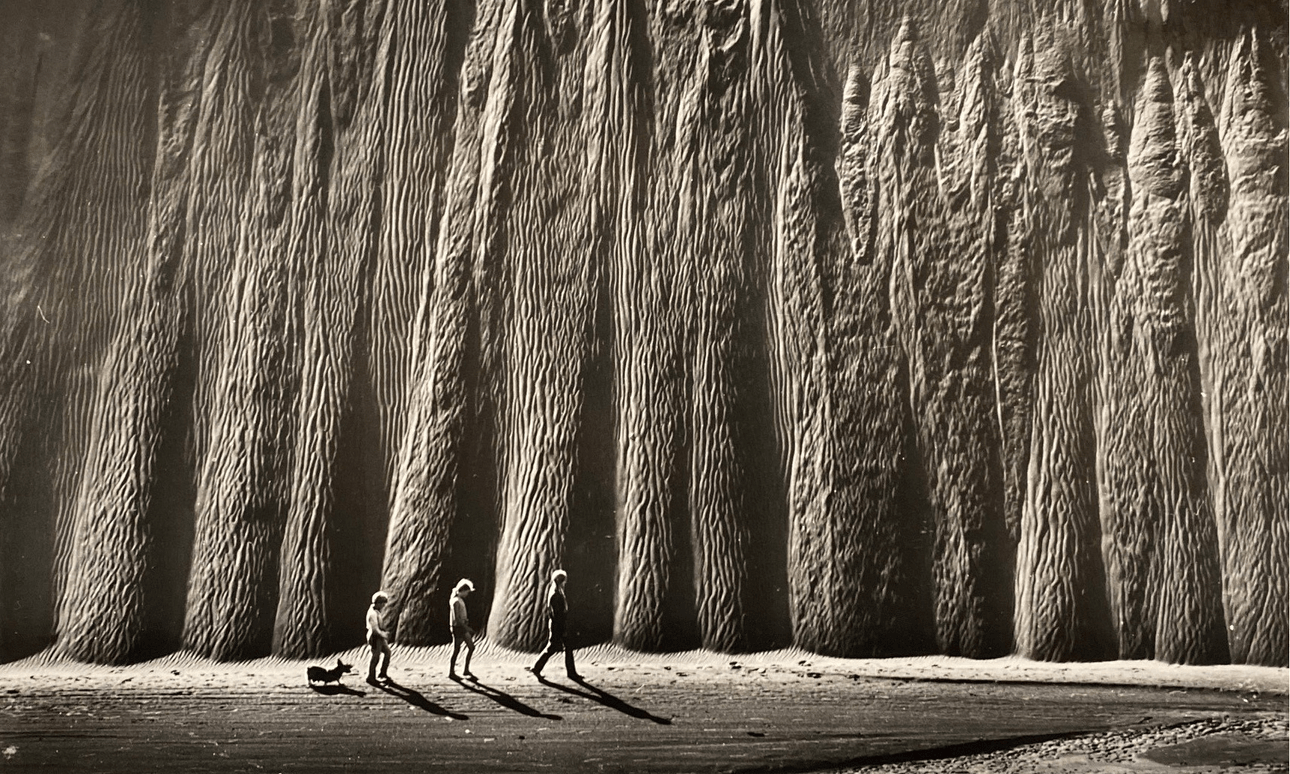Pioneering West Auckland nature photographer Olaf Petersen is the subject of a new book and an exhibition at Auckland Museum. Curator (pictorial) Shaun Higgins highlights five of the show’s standout images.
So Lonely, 1972
In So Lonely, Petersen creates an eerie feeling of isolation on the windswept dunes at Pouto. This work is a great example of his approach to photography: he sought to capture images which would achieve a certain mood. Taken just after rain, the smooth sands and tiny oystercatcher making its way along a path of sunlight were described by Petersen as “a grab shot”. His modest description omits the years of experience and intimate understanding he had of the environment, especially his favourite element: sand. Like many of his images, sand features throughout the composition replacing sky with an endless expanse in which both viewer and the little tōrea become lost in the dunes.
Go Home! 1976
Petersen’s work often looks at the intersection of humanity and nature. In Go Home! he takes a piece of driftwood and transforms it into a giant taniwha, eye and mouth towards the human figure walking away behind. The combination of humour and a serious message would become a feature of his later work – as the places he frequented saw an impact from visitation, especially examples like Muriwai where the toheroa beds were over-exploited, photographs like this one carry a subtle challenge from a man who preferred to let his pictures do the talking.
Bruce and Glenys with the Field Club, 1972
Imagine my delight and surprise when I sent Bruce Hayward a beautiful Petersen portrait of two people in raincoats facing each other in a wet outdoor scene, only to find out that the figures were Bruce and his soon-to-be-wife Glenys Puch! It’s an adorable image taken at Whangaparapara on Aotea, Great Barrier Island, and as Bruce noted while the couple are seen facing each other, he has his eye turned towards the photographer. Glenys also featured in a silhouetted sunset photograph by Petersen taken on Red Mercury Island which would feature in the NZ Herald in May 1972.
Species protected by law, 1952
In the early 1950s Petersen started a series of regular visits to the endangered spotted shag that reside on the cliffs at Te Henga. To get to them he would have to lower himself with his camera down by rope, as they lived literally on the rockface. For several years he regularly documented them, pleading the importance of their survival in an article he wrote and photographed for the Weekly News. His studies show adult shags and their young in this precarious environment.
Walkabout, 1971
One of Petersen’s most iconic images was Walkabout, first titled Through The Enchanted Forest. The photograph features Sarah, Idele and Jim Wheeler and their dog Jasmin walking past towering dunes at Lake Wainamu, Te Henga. The sand feature – which resembles pillars or trees the way that Petersen photographed it – disappeared after two days. Years later when Jim Wheeler sat down to a School Certificate creative writing exam he’d open the question booklet to find the same image in front of him as a writing prompt. As Wheeler recalls it, he wrote about his true experience of being photographed by Olaf Petersen.
Olaf Petersen spent years documenting the everyday scenes of his west-Auckland life – from the dunes of Lake Wainamu to a rainy day on Aotea, Great Barrier Island. To see more of his works, visit Nature Boy: The Photography of Olaf Petersen at Auckland Museum.


